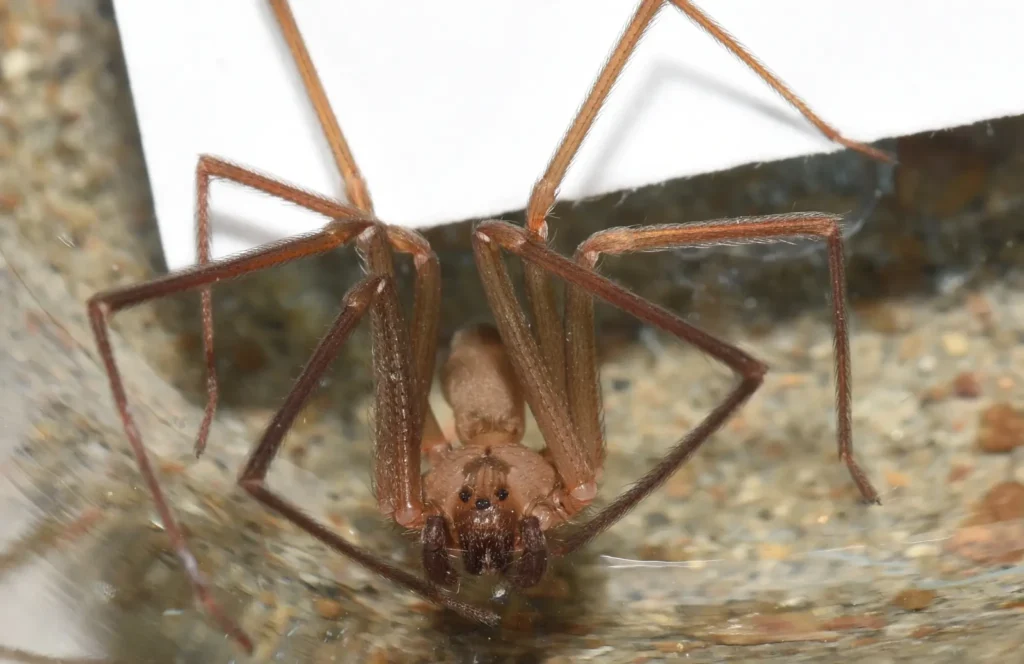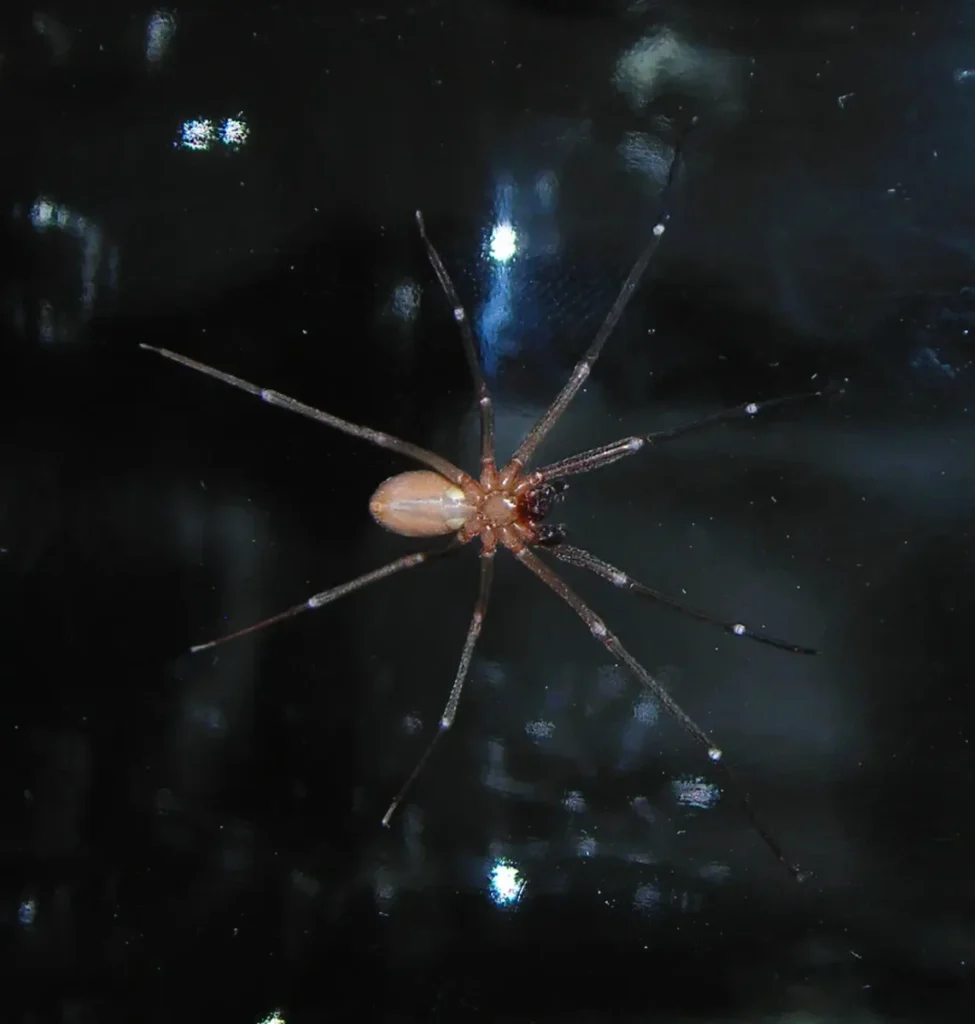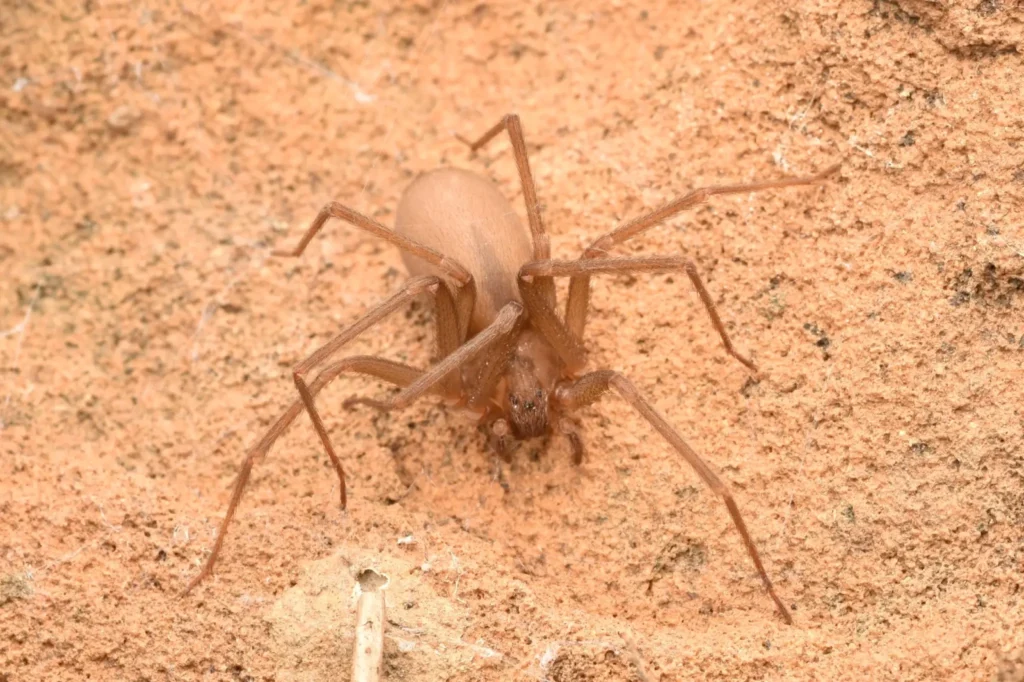Brown Hermit Spider (Loxosceles reclusa)- one of the most dangerous spiders in North America. Its bite contains a powerful necrotic venom that can cause serious tissue damage, and in rare cases, even fatal consequences.
📌 Why is this spider special?
✔ Subtle and cautious, but extremely toxic
✔ Its venom destroys cells, causing skin necrosis
✔ Often lives in people's homes without attracting attention
✔ Can go without food and water for a long time
✔ The bite is painless at first, which makes timely diagnosis difficult
The brown hermit is a spider that doesn't normally attack humans, but its venom is one of the strongest among spiders. Let's delve into the specifics of this small but dangerous creature.

Scientific classification
✔ The Kingdom: Animals (Animalia)
✔ Type: Arthropods (Arthropoda)
✔ Class: Arachnids (Arachnida)
✔ Row: Pavuk (Araneae)
✔ Family: Sicariidae
✔ Gender: Loxosceles
✔ View: Loxosceles reclusa
📌 More than 100 species of the genus Loxosceles are known, and all of them have a poison with a necrotic effect.
Description and appearance
🕷 What does a brown hermit spider look like?
✔ Size: 6-20 mm (together with legs up to 40 mm)
✔ Colour: Light brown or dark yellow
✔ Cephalothorax: It has a distinctive mark in the shape of a violin (hence its name "fiddleback spider" or "violin spider")
✔ Oko: 6 eyes arranged in three pairs (most spiders have 8 eyes)
✔ Footboard: Long, thin, covered with fine hairs
✔ Abdomen: Rounded, without drawings
📌 The main difference between the brown hermit and other spiders is that they have three pairs of eyes, rather than four, as in most species.
Distribution area and habitat
🌍 Where does this spider live?
✔ Main range – USA, especially central and southern states (Oklahoma, Texas, Kansas, Arkansas, Missouri)
✔ Occurs in Mexico
✔ Likes warm, dry places, such as storerooms, basements, attics, old furniture, clothing
📌 It often hides in dark corners of homes, rarely weaves cobwebs, and leads a secretive lifestyle.
Behavior and lifestyle
🌙 Secret Night Hunter
✔ Nocturnal predator "he hides by day, hunts by night
✔ Not aggressive, attacks only if there is a threat
✔ Can live for several months without food
✔ Creates small spider caches, but does not use the web to catch prey
📌 The brown hermit spider does not like contact with people and avoids them, but sometimes bites if it is accidentally pressed or disturbed.

Food
🍽 What does the brown hermit eat?
✔ Insects (cockroaches, crickets, ants)
✔ Other spiders
✔ Can eat dead organisms
📌 Uses poison to paralyze the victim, and then dissolves the tissue with enzymes.
Bite and its consequences
🚨 Why is his bite dangerous?
✔ The poison contains enzymes that cause tissue necrosis
✔ First symptoms: painless bite, redness
✔ After 6-12 hours: there is severe pain, swelling
✔ After 24-48 hours: an ulcer with necrotic tissue is formed
📌 In severe cases, surgery or even amputation may be required.
🔴 Deaths are rare, but are possible in children, the elderly, and people with weakened immune systems.
First aid for a bite
🩹 What should I do if I'm bitten by a spider?
1️⃣ Cool the bite site (apply ice)
2️⃣ Do not squeeze out the poison - this may worsen necrosis
3️⃣ Restrict movement of the affected area
4️⃣ Consult a doctorespecially if the wound is enlarged
📌 There is no antidote to the poison, and the treatment is symptomatic.
Natural enemies and threats
🦅 Who hunts the brown hermit spider?
✔ Lizards
✔ Birds (sparrows, flycatchers)
✔ Praying Mantises
✔ Other spiders
📌 In nature, the number of spiders is controlled by predators, but in human dwellings they have few enemies.

Can I keep it at home?
🏡 Is the brown hermit spider dangerous to humans?
✔ It avoids contact with people, bites only in case of threat
✔ Its venom can be deadly to pets
✔ Cases of spider infestations in homes have been reported in the US
📌 Keeping such a spider at home is risky, as its bite can cause serious health problems.
Interesting facts
💡 A brown hermit can live up to 2 years without food!
💡 Its venom contains enzymes that break down cell membranes!
💡 The spider can accidentally get into clothes or shoes, which is the cause of many bites!
💡 Compared to black widows, the bite of a brown hermit is more likely to cause necrosis, but less likely to be fatal!
Conclusion
The brown hermit spider is a small but very dangerous member of the arachnids. Its venom causes tissue necrosis, and the spider itself likes to settle in people's homes, remaining invisible.
❗ Be careful! If you live in areas where these spiders live, always check your clothing, shoes, and dark corners of the house to avoid unwanted contact with this dangerous creature.